
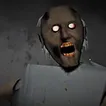
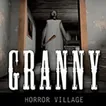


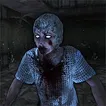

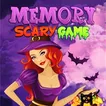
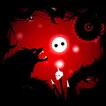



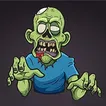






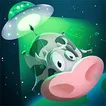



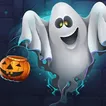








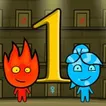





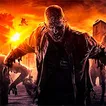









Scary Games: The Ultimate Online Horror Gaming Experience
Embark on a journey into the chilling world of online scary games, where fear meets fun in an adrenaline-fueled adventure. Discover a vast array of free-to-play games that span from the creepiest virtual environments to the most intense survival horror experiences, all designed to test your courage and keep you at the edge of your seat.
In these games, every shadow could conceal a lurking terror, and each creaking sound might signal an unseen menace. The dimly lit corridors, the eerie silence punctuated by distant screams, and the sudden appearance of ghastly figures are all hallmarks of the horror genre that have been masterfully translated into the digital realm.
As you navigate through haunted landscapes and solve macabre puzzles, the sense of dread builds, ensuring that your pulse races and palms sweat. The unpredictability of these games means that no two playthroughs are the same, providing endless scares for even the most seasoned horror aficionados.
Whether you’re a fan of psychological thrillers that unravel your mind or prefer the heart-pounding chase of being pursued by relentless monsters, the online world of scary games has something to terrify everyone. These games are more than just a test of your bravery; they’re a testament to the human fascination with the macabre and the enjoyment found in the safe exploration of our deepest fears.
So, dim the lights, turn up the volume, and prepare to dive into the ultimate online horror gaming experience. Just remember, in the world of scary games, you’re never truly alone, and the next scare is just a click away.
Scaring Game: The Psychological Thrill of Virtual Fear
The allure of scary games lies in their ability to tap into the primal parts of our psyche, offering a controlled environment where we can confront our fears without real-world consequences. This virtual playground of terror exploits our innate fight-or-flight response, triggering a rush of adrenaline that can be thrillingly addictive. The psychological draw is complex, weaving together the immediate shock of jump scares with the enduring tension of a horror-filled narrative.
Players are not just passive recipients of fear; they are active participants in a story that unfolds with their every decision. The immersion is deepened by the game’s ability to personalize fear, often tailoring the experience to the player’s actions and playing on individual phobias. The result is a potent mix of anticipation and anxiety, as players become emotionally invested in their virtual survival.
The fascination with these games also stems from the human desire to experience extreme emotions and to test personal limits. In the safety of the virtual world, players can explore the darker corners of horror and morbidity, satisfying a curiosity that might be deemed too risky or taboo in real life. It’s a form of catharsis, allowing players to release pent-up emotions and stress through the vicarious experience of fear.
Moreover, scary games serve as a modern-day campfire, providing a shared space to recount tales of terror and bravery. They foster a sense of community among players, who bond over shared experiences of overcoming in-game horrors. The psychological thrill of virtual fear, therefore, is not just about individual scares but also about the collective enjoyment of storytelling and the human connection that emerges from facing fears together.
The Evolution of Online Horror: Innovations and Inspirations
The landscape of online horror has undergone a remarkable transformation, evolving from pixelated sprites and simplistic scares to richly detailed worlds filled with nuanced terror. Early horror games were limited by technology, offering rudimentary gameplay that relied heavily on imagination. As technology advanced, so did the complexity of these games, allowing developers to craft more sophisticated and immersive environments that could truly unsettle players.
Innovations in graphics and sound design have played a pivotal role in this evolution, creating hyper-realistic settings that blur the line between game and reality. The use of binaural audio, for example, places players at the center of a 3D soundscape, where the faintest whisper or distant footstep can heighten the sense of dread. Lighting effects and dynamic shadows have also become tools of terror, with darkness itself becoming an omnipresent antagonist.
Narrative techniques borrowed from classic horror literature and cinema have been adapted to the interactive nature of games, providing a deeper emotional connection to the characters and plot. The storytelling in modern horror games often involves complex moral choices and branching storylines, which not only affect the outcome but also the player’s psychological journey. This level of narrative depth ensures that the horror experience is not just about the scares, but also about the unsettling themes and existential questions that linger long after the game is over.
Moreover, the incorporation of folklore and myths from various cultures has enriched the genre, introducing players to a diverse tapestry of horrors that transcend the typical tropes. This has not only broadened the appeal of scary games but has also fostered a greater appreciation for the artistry and creativity that goes into crafting these digital nightmares.
The evolution of online horror is a testament to the ingenuity of game developers who continue to push boundaries, drawing inspiration from a myriad of sources to deliver experiences that are as terrifying as they are innovative.
Horror Games as a Cultural Phenomenon: Beyond Entertainment
Horror games have transcended their role as mere pastimes to become a significant cultural phenomenon, influencing not only the gaming industry but also the broader landscape of entertainment and social interaction. They serve as a digital campfire around which communities of gamers gather to share their experiences of fear and triumph. These games have created a subculture with its own language, memes, and folklore, as players exchange stories of their virtual encounters with the supernatural and the macabre.
The impact of horror games extends beyond their immediate audience. They inspire creators in other media, leading to the production of films, books, and art that echo the themes and aesthetics found within these virtual worlds. The motifs and narratives explored in horror games often reflect societal anxieties and the collective subconscious, allowing players to engage with contemporary issues through the lens of entertainment.
Furthermore, horror games have become a medium for social commentary, with developers embedding deeper messages within the spine-chilling gameplay. Issues such as mental health, societal collapse, and existential dread are woven into the fabric of these games, prompting players to confront and contemplate real-world fears in a context that is both safe and stimulating.
The cultural significance of horror games is also evident in their ability to bring people together. Live streaming and video sharing platforms have turned the act of playing these games into a communal event, with audiences around the world tuning in to watch and interact with their favorite gamers as they navigate through terrifying scenarios. This shared experience not only amplifies the thrill of the game but also fosters a sense of belonging among fans who revel in the collective adrenaline rush.
In essence, horror games have become more than a niche genre; they are a dynamic and influential part of modern culture, offering a unique blend of entertainment, community, and introspection that resonates with a diverse and passionate audience.